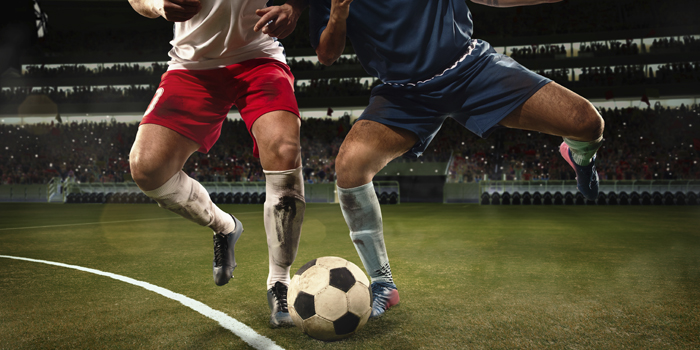
Creatine is one of the most widely used and studied ergogenic aids in sports. Studies have consistently shown that creatine supplementation increases intramuscular creatine absorption and can improve exercise performance. In addition, research has indicated that creatine supplementation may enhance post-exercise recovery, injury prevention, thermoregulation, rehabilitation, and concussion and/or spinal cord neuroprotection (1).
I currently train tactical athletes and clients from the general public. Outside of work, I train youth soccer players. I thought it would be best to use myself for a creatine experiment to pass that firsthand knowledge to my athletes.
Oh, and before you read the results below, I should mention that I haven't taken creatine since 2004.
Results
My training includes three days per week of a full body weight training routine with five to six exercises per day and five sets of between three to six repetitions per exercise. Sessions end with single-arm kettlebell swings or snatches for time (waved two to twelve minutes) for conditioning purposes.
Measurements were tracked using an InBody machine.
Pre-Creatine
Date: June 2022
Weight: 214 pounds
Dry Lean Mass: 50.5 pounds
Body Fat Mass: 26 pounds
Body Fat: 12.1%
Post-Creatine
Date: October 2022
Weight: 222 pounds
Dry Lean Mass: 53.8 pounds
Body Fat Mass: 20.6 pounds
Body Fat: 9.2%
The sum of -5.4 in fat mass, +3.3 in dry lean mass, and +8 pounds in total weight yields 5.9 pounds of assumed water weight gain. This is likely due to creatine’s osmotic potential.
Supplementation
Supplementation protocols follow one of two recommendations. The first method is to take 20 grams a day (broken up into 4, 5-gram servings) for five to seven days to maximize creatine storage in the body. After this period, repeat a daily intake of 3-5 grams per day to maintain saturation. Ingesting creatine with carbohydrates or carbohydrates and protein has been reported to consistently promote greater creatine retention (2,3,4,5).
The second recommendation is to ingest 3-5 grams daily until the body maximizes its storage capacity. That happens in about thirty days. I would recommend the first method for immediate results. I chose the latter for convenience.
Creatine supplementation was intended to increase muscle availability to enhance acute exercise activity. Supplementation would allow an athlete to do more work over a series of exercises to increase muscle mass, strength, and exercise performance. There is a wide body of research demonstrating the effectiveness of supplementation.
Creatine originated in power-based sports; however, the prevalence of its use has expanded. In 2014, the NCAA reported the use of creatine among their athletes. The more predominant usage was found in ice hockey-29%, followed by wrestling-28%, football-27%, lacrosse-25%, and swimming-19%. Soccer was reported at 11% (6). There is growing evidence that the supplement can provide much more beyond its capacity to increase muscle mass and strength, which may benefit the soccer player and other contact athletes.
Recovery
The importance of glucose consumption after exercise has been known to enhance recovery. Green et al. found that taking creatine with larger doses of carbohydrates enhanced glucose and creatine retention in working muscles. If glucose retention is crucial to recovery, the incorporation of creatine supplementation could aid in the retention of glucose, leading to superior rates of recovery and the prevention of overtraining (2).
Injury Prevention
There are no significant findings on injury prevention. However, in a separate study, Greenwood et al. did find creatine users were less likely to experience muscle cramps, tightness, dehydration, and muscle strains when compared to those who did not use creatine (7).
It is a myth that creatine will lead to cramping and dehydration. I never found this to be true from my own experiences.
Another concern for many athletes is muscle atrophy in injured limbs following surgery and immobilization. Several studies found that the supplementation of creatine lessened the muscle atrophy associated with immobilization and showed increased strength throughout the rehabilitation process (8,9).
Traumatic Brain Injury and Post-Concussion Symptoms
Soccer involves heading the ball instead of using the chest, thigh, or foot. Research is ongoing, but using this skill may lead to sub-concussive brain trauma. In addition, players are at risk for butting heads, elbows, falls, or kicks to the head that can lead to concussion or traumatic brain injury.
Literature suggests that females are at a higher risk than their male counterparts. Although further research is needed, it is suggested that females have 70-80% fewer endogenous creatine stores than males due to a lower relative muscle mass and dietary intake. Therefore, low creatine status potentially contributes to higher incidences of concussion and symptom severity in females.
Creatine has the potential to act as a preventative strategy for mild traumatic brain injury by enhancing brain mitochondrial function and decreasing oxidative stress and cortical damage.
An injury to the brain results in vascular damage leading to restricted blood flow, swelling, and glutamate neurotoxicity. When axons in the brain become strained after injury, calcium enters the cells and disrupts normal mitochondrial function.
To regain homeostasis and restore balance, ATP is required as an energy source. Unfortunately, lower blood flow and mitochondrial limitations make aerobic pathways for ATP production less feasible, and glycolysis does not provide sufficient energy. Thankfully, creatine can act as a source of energy to restore normal cellular function, reducing post-concussion symptoms and symptoms of traumatic brain injury (11).
Conclusion
Creatine’s popularity has given rise to a substantial body of positive research. In addition, the supplement is being used in applications beyond sports which includes the clinical application to the elderly and patients with neurological conditions including Alzheimer’s, Parkinson’s, and Huntington’s disease.
Creatine’s safety and potential for recovery, muscle mass retention, and mitigating symptoms of brain trauma would lead to the recommendation of its use to soccer players and other contact sport athletes where there are higher instances of concussion or blows to the head.
References
- Kreider, R.B., Kalman, D.S., Antonio, J. et al. International Society of Sports Nutrition position stand: safety and efficacy of creatine supplementation in exercise, sport, and medicine. J Int Soc Sports Nutr 14, 18 (2017).
- Green AL, et al. Carbohydrate ingestion augments skeletal muscle creatine accumulation during creatine supplementation in humans. Am J Physiol. 1996;271(5 Pt 1):E821–6.
- Kreider RB, et al. Long-term creatine supplementation does not significantly affect clinical markers of health in athletes. Mol Cell Biochem. 2003;244(1–2):95–104.
- Steenge GR, Simpson EJ, Greenhaff PL. Protein- and carbohydrate-induced augmentation of whole body creatine retention in humans. J Appl Physiol (1985). 2000;89(3):1165–71.
- Greenwood M, et al. Differences in creatine retention among three nutritional formulations of oral creatine supplements. J Exerc Physiol Online. 2003;6(2):37–43.
- NCAA National Study of Substance Use Habits of College Student-Athletes. 2014. [cited 2017 March 5, 2017]; Available from: http://www.ncaa.org/sites/default/files/Substance%20Use%20Final%20Report_FINAL.pdf. Accessed 22 Apr 2015.
- Greenwood M, et al. Cramping and injury incidence in collegiate football players Are reduced by creatine supplementation. J Athl Train. 2003;38(3):216–9.
- Hespel P, et al. Oral creatine supplementation facilitates the rehabilitation of disuse atrophy and alters the expression of muscle myogenic factors in humans. J Physiol. 2001;536(Pt 2):625–33.
- Op’t Eijnde B, et al. Effect of oral creatine supplementation on human muscle GLUT4 protein content after immobilization. Diabetes.
- Zeran, Miguel. Creatine Supplementation: A Method to Support Brain Health and Cognitive Function in the Tactical Profession. 2022, NSCA TSAC Report, Issue 66.
- Ainsley Dean, PJ, Arikan, G, Opitz, B, and Sterr, A. Potential for use of creatine supplementation following mild traumatic brain injury. Concussion 2(2): CNC34, 2017.
- Datson N, Hulton A, Andersson H, et al. Applied physiology of female soccer: An update. Sports Med 44: 1225–1240, 2014.

Andrew Dykstra played men's soccer for Virginia Commonwealth University in Richmond, Virginia, earning his BS in Exercise Science (2008) and MS in Sports Leadership (2010). He played professional soccer for 10 years in Major League Soccer (Chicago Fire 2009-2010, Charleston Battery 2011, DC United 2012-2016, Sporting KC 2017-2018, and Colorado Rapids 2018). After retiring, he became the Director of Goalkeeping and Sports Performance for Virginia Development Academy in Woodbridge, VA. Andrew was responsible for the conditioning periodization and injury prevention protocol for over 290 soccer players ranging from 13 to 23 years old. He holds his CSCS (since 2013) and SFG1 certification from StrongFirst (since 2022). Andrew is now a Health and Wellness Specialist, training both tactical athletes and the general population as a government contractor.









